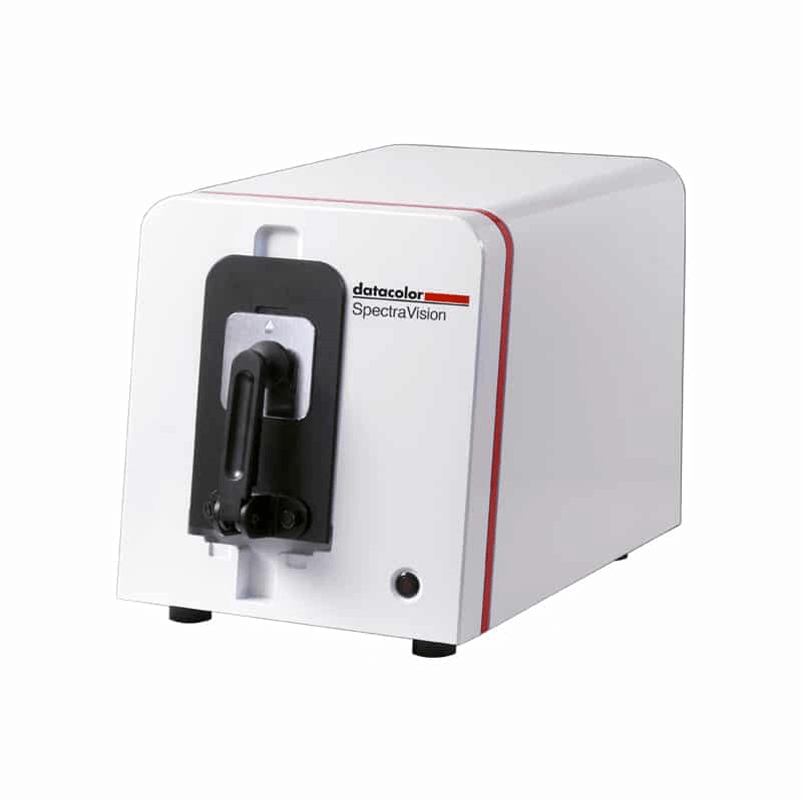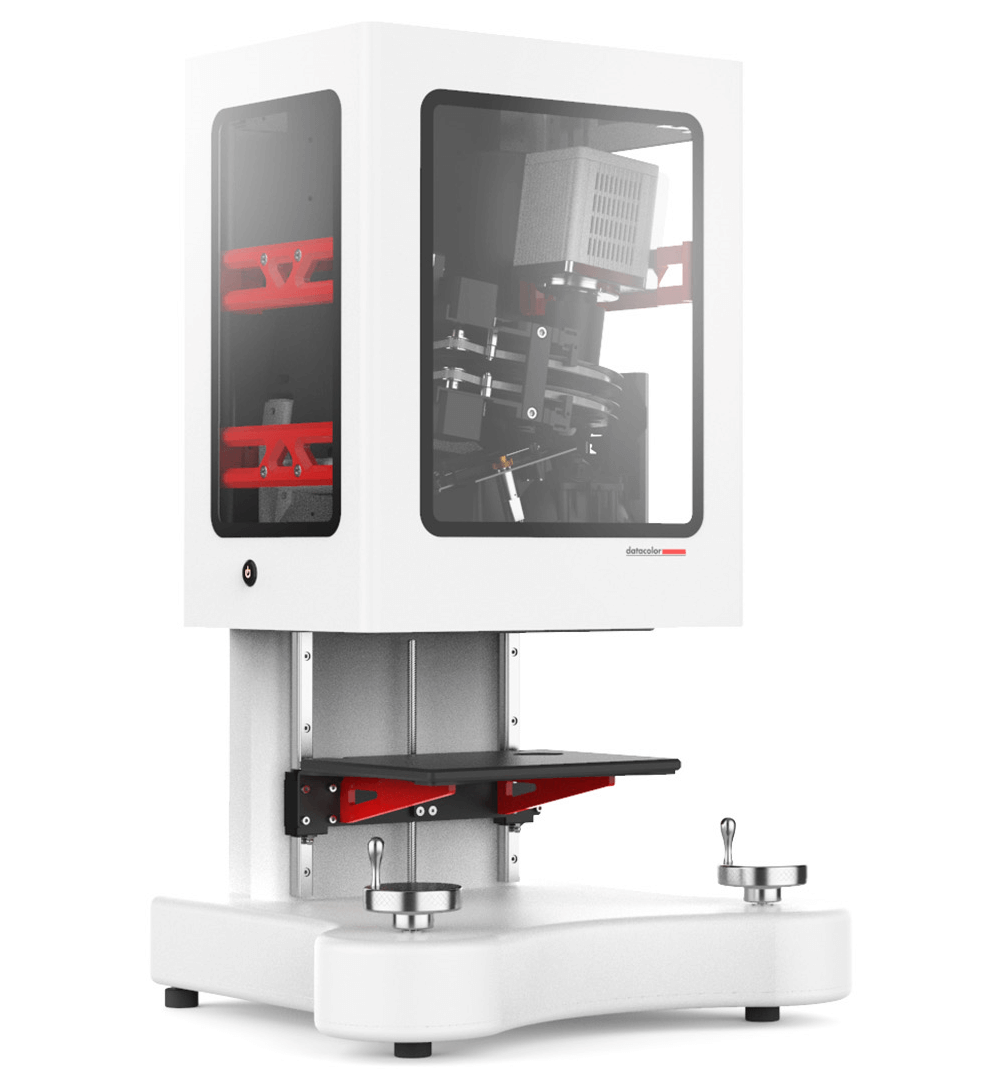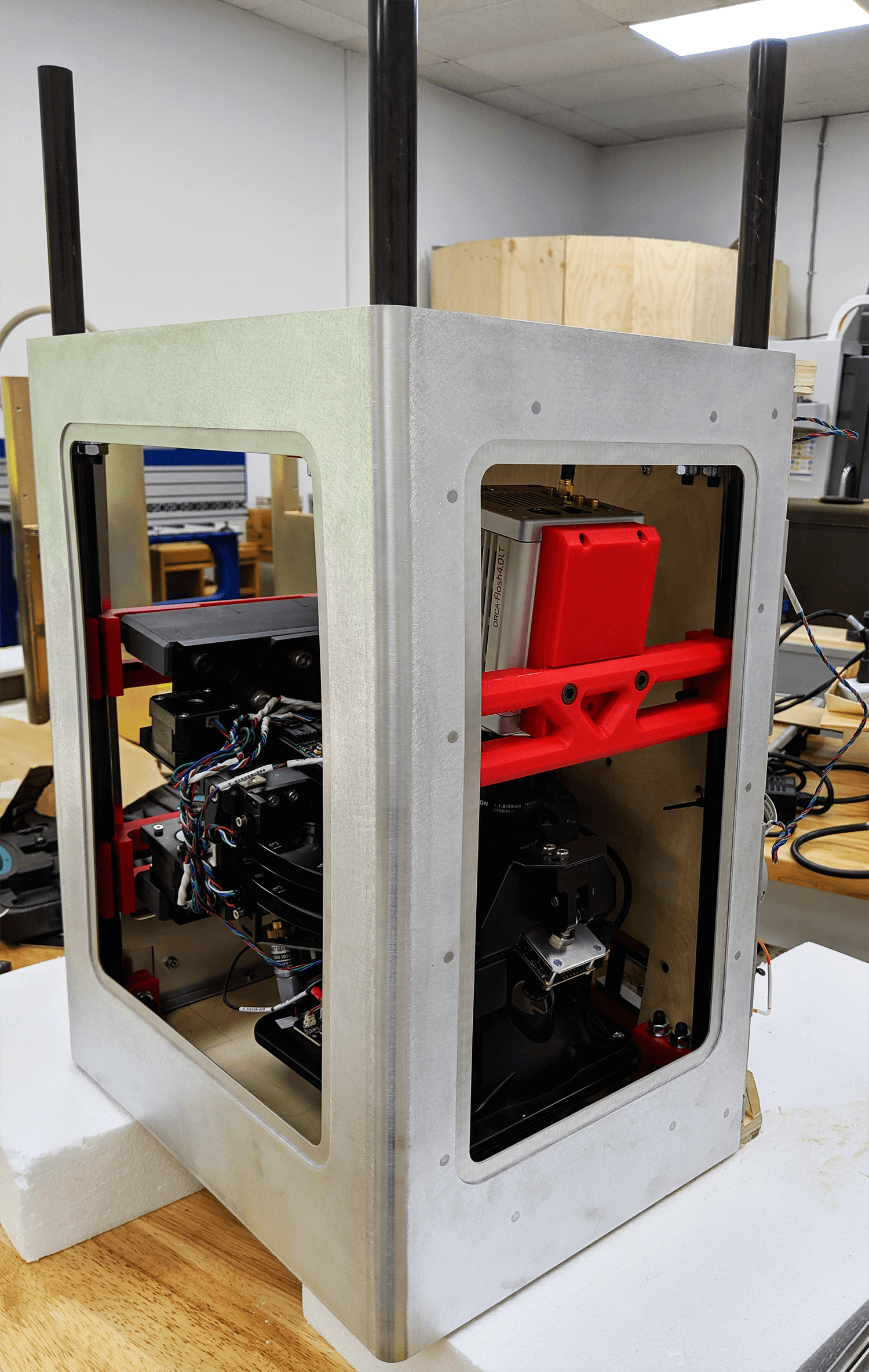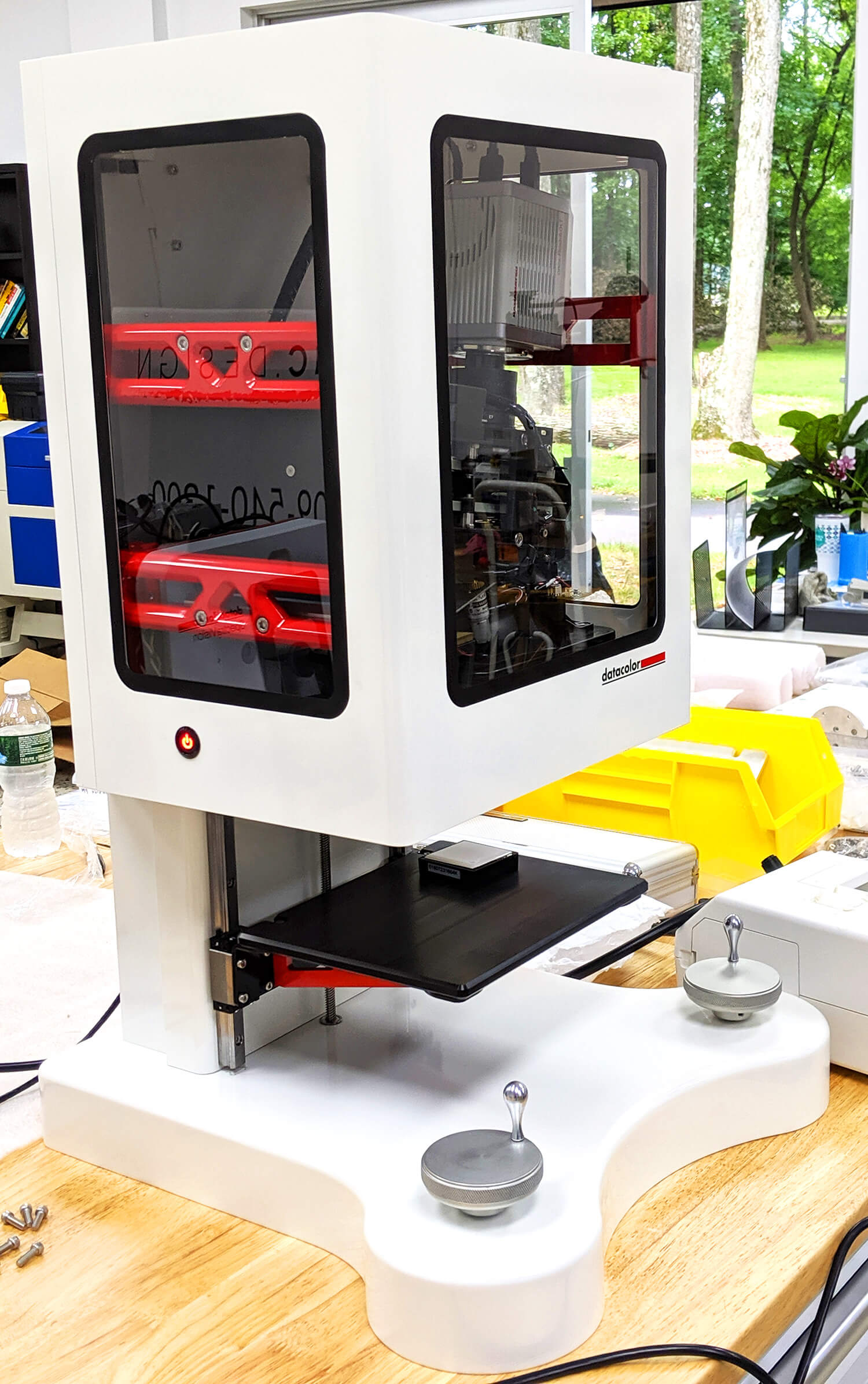Last year we received a series of fixture design requests centered around one user question: How to hold small slippery objects in mid-air for color measurement.
While investigating this design task one fact was immediately obvious: A loosely held object could slip and fall directly into the measurement chamber of the client’s spectrophotometer (Datacolor’s Spectravision product) leading to wasted time and potential damage.
Also, Spectravision’s ability to measure multiple samples at a time would be wasted if a user could only hold a single item at a time for measurement.
These factors led to interest in a vertically oriented version of the Spectravision instrument. A vertically oriented instrument would incorporate a flat tray for sample presentation, allowing gravity to solve the problem of holding small slippery samples. The new vertically oriented instrument would function in much the same way as a large precision microscope with best-in-class ability to capture and measure colors. The sample tray would have adjustable height via coarse and fine adjustment knobs.

Horizontal SpectraVision 
Rendering of Vertical SpectraVision
Zaic Design was given the task of designing a vertical enclosure and stand for Spectravision’s internal components. This redesign also presented the opportunity to improve access for instrument maintenance and to simplify optical alignment for factory assembly.
In order to accommodate a tight lead time, we fully utilized our internal prototyping capabilities.
Our 3D printers were useful for creating rough prototypes of the mounting brackets that would slide along on carbon fiber rods for precision alignment of internal optical components. Using quickly fabricated mockups, we were able to prove out the optical alignment concept quickly without multiple rounds of CNC machined components.

Prototype using 3D printed parts 
First Functional Prototype of Vertical SpectraVision
One task that is always fun is finding the best location for PCBs, taking into account mechanical clearance, stress on cable interfaces, heat, EMF noise, and maintenance access considerations. We used our laser cutter to prototype acrylic mounting panels for quick evaluation of various PCB mounting locations. These panels would later be water-jetted from aluminum sheet stock using the same CAD files.
Once the design concept was validated, we were able to quickly fabricate CNC machined components. Having in-house machining centers saved us weeks of prototyping time that would have otherwise been spent waiting for parts or working through multiple part revisions. In-house CNC machining allowed us to quickly test and revise fits as needed. The outcome of these efforts was a fast turn-around: Roughly 2 months from approved concept to completed functional prototypes.
The first assembled unit successfully passed all the client’s optical and electrical test parameters before it was handed over to their internal engineering team for manufacturing review and continued refinement. “Spectravision V” was released as a product on June 16, 2020. You can read more here: Press release. Here is the link to the instructional video on how to use SpectraVision V.







0 Comments